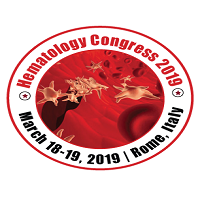
Igor Krizaj
Jozef Stefan Institute, Slovenia
Title: The first intrinsic tenase complex inhibitor with serine protease structure: A new perspective in anticoagulant therapy
Biography
Biography: Igor Krizaj
Abstract
Components of the intrinsic blood coagulation pathway, among them factor VIIIa (FVIIIa), have been recognized as suitable therapeutic targets to treat venous thromboembolism, pathological process behind two very serious cardiovascular diseases, deep vein thrombosis and pulmonary embolism. Here, we describe a unique glycoprotein from the nose-horned viper (Vipera ammodytes ammodytes [Vaa]) venom, Vaa serine proteinase homolog 1 (VaaSPH-1), structurally a serine protease but without an enzymatic activity and expressing potent anticoagulant action in human blood. We demonstrated that one of its targets in the blood coagulation system is FVIIIa of the intrinsic tenase complex, where it antagonizes the binding of FIXa. Anticoagulants with such characteristics are intensively sought, as they would be much safer for medical application as the contemporary drugs, which frequently induce excessive bleeding and other complications. VaaSPH-1 is unlikely to be orally available for chronic usage as it has molecular mass of 35 kDa. However, it represents a very promising template to design low molecular mass FVIIIa-directed anticoagulant substances, based on structural features of the interaction surface between VaaSPH-1 and FVIIIa. To this end, we constructed a threedimensional model of VaaSPH-1 bound to FVIIIa. The model exposes the 157-loop and the preceding α-helix as the most appropriate structural elements of VaaSPH-1 to be considered as a guideline to synthesize small FVIIIa-binding molecules, potential new generation of anticoagulants.

